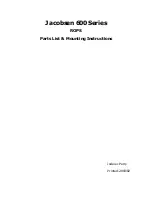
B
A
A
B
C
D
B
B
B
A
L
1
L
2
✔
✔
✔
✘
B
B
B
A
L
1
L
2
✔
✔
L
L
1
1
--
LL
22
=
=
4 x B
4 x B
✔
✔
✔
✔
✔
✔
B-total
✘
✘
L
L
1
1
--
LL
22
=
=
4 x B
4 x B
✘
✘
FRONT FURROW WIDTH
Manual front furrow width adjustment „standard“
Hydraulic front furrow width adjustment „standard“
Basic setting
Fine setting
The front furrow width, must be set so that the first plow body cuts exactly the same width as all the other plow bodies.
This setting is decisive for a level connection between two machining lines.
First measure the inner track of the rear wheels of the towing vehicle (inner tire flank to inner
tire flank) in cm. Then set the determined dimension using the scale on the slide plate „A“
(the instructions for adjusting the slide can be found in the following sections). The correct
setting is reached when the marking „B“ on the slewing gear (red line) matches the dimensi-
on of the inner track on the scale „A“.
Set a common cutting width (e.g. 45 cm) and do not change it during the following fine adjustment. Determine the exactly set cutting
width by measuring the distance „B“ between two landsides (at a 90 ° angle). Now multiply the measured cutting width „B“ by the number
of furrows (example for 4-share plow: measured cutting width „B“ 45 cm x 4 furrows = 180 cm „B-total“ => total cutting width).
Now measure, starting from the furrow edge towards the unploughed, a distance „
LL
11
“ that is slightly larger than the previously calculated
total working width „B-total
B-total
“ (e.g.
LL
11
=300 cm). Mark the position with a clearly visible object (
) and plow past the marked position. Now
measure the dimension „LL
22
“ between the marking (
) and the new furrow edge (e.g.
LL
22
-Actual-Dimension
-Actual-Dimension
= 126 cm).
Now calculate the „LL
22
-Target-Dimension“
-Target-Dimension“
as follows: subtract the calculatet total cutting width „B-total“ (180 cm) from the dimension „L1“
(example: „
LL
11
“ 300 cm - „B-total
B-total“ 180 cm = 120 cm „LL
22
-Target-Dimension“
-Target-Dimension“
).
If „LL
22
-Target-Dimension“
-Target-Dimension“ and „LL
22
-Actual-Dimension
-Actual-Dimension
“ matches, all furrows already have the same cutting width and therefore the front fur
-
row width is already set correctly. If the dimensions differ, you can use the difference to determine what needs to be changed. (Example:
„LL
22
-Actual-Dimension
-Actual-Dimension“ 126 cm -- „LL
22
-Target-Dimension
-Target-Dimension
“ 120 cm = 6 cm). The first furrow thus cuts 6 cm too much. Adjust the front furrow width so
that the first plow body moves 6 cm to the unploughed area and thus cuts 6 cm less.
The front furrow width is set using the hydraulic cylinder „C“.
¾
Lower the plow to the ground to relieve the slide plates.
¾
Adjust front furrow width: Pressurize the hydraulic hoses „D“ until the desired front furrow
width is reached. To change the direction, change the pressure flow of the spool valve.
¾
If the slide is to be adjusted several cm, it is helpful to briefly raise the plow and then lower
it again. In this way, tension between the hitch and the plow can be reduced.
¾
Adjustments during plowing are not provided, only use the hydraulic front furrow width
adjustment when standing still with the plow lowered.
The front furrow width is set using spindle „A“.
¾
Lower the plow to the ground to relieve the slide plates.
¾
Increase front furrow width: Turn the spindle “A” with the help of the adjusting knob “B”
clockwise (plow moves to the plowed area).
¾
Reduce front furrow width: Turn the spindle „A“ with the help of the adjusting knob „B“ coun
-
terclockwise (plow moves to the unploughed area).
¾
If the slide is to be adjusted several cm, it is helpful to briefly raise the plow and then lower it
again. In this way, tension between the hitch and the plow can be reduced.
¾
A slide that is difficult to adjust is normal and can be traced back to precise technical pro
-
duction with low manufacturing tolerances.
Correctly
Wrong
12
www.regent.at












































